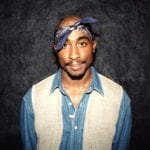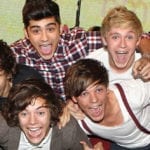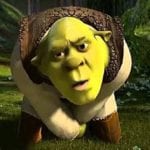 Movies and TV
Movies and TV  Movies and TV
Movies and TV  History
History 10 Things You Never Knew About Presidential First Ladies
 Movies and TV
Movies and TV 10 Zombie Movies That Will Actually Terrify You
 Humans
Humans 10 Times Scientists Were Absolutely Sure… and Absolutely Wrong
 Our World
Our World 10 Pivotal Moments for Life on Earth
 Movies and TV
Movies and TV 10 Most Realistic Medical TV Shows of All Time
 Creepy
Creepy 10 Eerie & Mysterious Ghosts of the Pacific Coast
 Weird Stuff
Weird Stuff 10 Typos That Accidentally Changed History
 History
History 10 Times Trickery Won Battles
 Technology
Technology 10 Awesome Upgrades to Common Household Items
 Movies and TV
Movies and TV 10 Movie Flops That Found Their Way to Cult Classic Status
 History
History 10 Things You Never Knew About Presidential First Ladies
 Movies and TV
Movies and TV 10 Zombie Movies That Will Actually Terrify You
Who's Behind Listverse?

Jamie Frater
Head Editor
Jamie founded Listverse due to an insatiable desire to share fascinating, obscure, and bizarre facts. He has been a guest speaker on numerous national radio and television stations and is a five time published author.
More About Us Humans
Humans 10 Times Scientists Were Absolutely Sure… and Absolutely Wrong
 Our World
Our World 10 Pivotal Moments for Life on Earth
 Movies and TV
Movies and TV 10 Most Realistic Medical TV Shows of All Time
 Creepy
Creepy 10 Eerie & Mysterious Ghosts of the Pacific Coast
 Weird Stuff
Weird Stuff 10 Typos That Accidentally Changed History
 History
History 10 Times Trickery Won Battles
 Technology
Technology 10 Awesome Upgrades to Common Household Items
10 Ways Old Films Faked the Fantastical
The subject of visual effects in movies often comes up nowadays in the context of complaints and for an understandable reason. We’ve gotten used to CGI and 3D graphics so much that their blatant inclusion can often feel cheap. VFX artists themselves often believe that the sign of a job well done is when people don’t notice or discuss it, which is quite unfortunate after so much work is put into something we take for granted.
The past was a very different time, however. For as much as we complain about fake-looking CGI and ridiculous effects, in the past, 3D graphics were either entirely unconvincing and difficult to use for most things or downright didn’t exist. The idea of convincing effects at this time was one that could only exist alongside a healthy dose of suspension of disbelief. Yet, they aged remarkably well, seldom looking bad despite not looking realistic. As these techniques are nothing if not very creative and interesting, let’s examine the ten most notable ones today.
Related: 10 Startling CGI Moments In TV And Movie Scenes
10 Puppets
Puppets in film aren’t what typically come to mind when we think of special effects, at least ones that are supposed to be convincing. Known mostly for stylized filmmaking usage, such as The Dark Crystal, puppets are actually a lot more versatile than one would assume! While they’ve fallen out of favor since CGI became the standard, alongside most entries on this list, puppetry was instrumental to some of the most iconic effects and characters in film history.
From the original Star Wars trilogy’s Yoda to multiple shots of dinosaurs, including the T-Rex in Jurassic Park and even the Pale Man of Pan’s Labyrinth, a film from the early 2000s, this technique can clearly achieve a lot more than The Muppets, given enough resources and directing talent.
The control of master puppeteers, the usability and unique, textured look of well-made puppets, and the actual, physical presence of a tangible object combine to create something that has the potential of being a lot more immersive and convincing than old children’s shows would have you believe.[1]
9 Green/Blue Screen
Green screens, and by extension blue screens, are considered a staple of modern film. It’s common to see jokes about movies nowadays filmed on wholly green sets, an idea that’s not entirely baseless, given how prevalent this technology has become in the past decade. What many people don’t seem to discuss, however, is just how long it has been around. They certainly started to reach their peak in the 2010s, but chroma key screens have actually been used in films for nearly a century!
Their usage was already very similar in the 1930s to what it is now, a technique used to layer two or more picture elements on top of each other. Even before green and blue screens, however, double exposure was used in photography as early as the 1860s, and in films by 1903, in Edwin S. Porter’s The Great Train Robbery. By the ’30s, blue screen technology—yes, specifically blue screen technology, as green wouldn’t become the norm for a number of years—had gone through a number of significant advancements and started seeing usage in films such as 1933’s King Kong. And it had already modernized and was soaring in popularity by the original Star Wars trilogy.
The color of the chroma key screen used may have shifted from blue to green, both specifically prized due to how far away they are from most human skin tones. Still, this technique that’s contemporarily assumed to be the most iconic element of modern filmmaking has, in reality, been just about the same for the history of the motion picture as a whole.[2]
8 Forced Perspective
This is possibly the most deceptively simple technique we’ll look at today. Forced perspective has been around literally as long as photography has, or possibly even longer, as it’s not unthinkable that painters way before the existence of film would utilize this effect just the same. The idea is really very simple; things that are farther away from our view appear to be smaller, and things that are closer, larger.
That really is all there is to it, in a way. The usage, however, is much more nuanced and widespread than that brief description suggests. From the short stature of The Lord of the Rings’ hobbits compared to the tall Gandalf and all the way to the 1959 Disney film Darby O’Gill and the Little People, forced perspective has been used for decades, if not centuries, made convincing by carefully crafted sets and simple optical trickery. It’s a really ingenious way of selling size differences without any real effects work necessary.
The technique isn’t limited to the contrast between large and little people, either. Combined with other practical effects such as miniatures, props, and even puppetry, with the right setup, it may let a giant destroy a city or grab the moon, all without using a simple technique of modern, digital filmmaking. While it may not be as frequently used today, it remains a clever and effective tool in the repertoire of effects artists.[3]
7 Paintings
Another example of a technique that’s rarely considered in the context of special effects, paintings have been used extensively throughout the history of film, without most of us even realizing it as we watched. More than just fine museum art or a fun pastime, real-life paintings have been responsible for a lot of the most iconic movie backgrounds of all time. With artists working on them meticulously and doing such a fantastic job, few even recognize their work as being there.
The most well-known usage of paintings as effects again comes from Star Wars, a movie that pioneered nearly every modern effects technique we take for granted. Paintings, in a way, are no exception. Even in the current digital age, matte shots are incredibly popular; the only thing that’s changed is the medium. From acrylic paint on glass to 3D renders and digital paintings, this old technique simply evolved, only losing the incredible, real-world paintings in the process.
The famous Industrial Light & Magic company behind films such as Raiders of the Lost Ark and Star Wars wasn’t the first to use them, either. The legendary Georges Méliès, a person whose work we’ll familiarize ourselves with much more a little further down, was already using paintings as backgrounds in the very early 1900s.[4]
6 Costumes
Fashion has influenced movies, undoubtedly. Stunning clothing isn’t exactly faking the fantastical, however, but thankfully that’s not what we’re discussing today. Before CGI could make all sorts of monsters and creatures come to life, that task was often delegated to costume artists and actors wearing their work.
While they may not always be the most convincing, they retain a charm that ages a lot more gracefully than CGI often does. Even aside from a wide variety of cheesy films with costumes of odd creatures we may expect, actors wearing intricately crafted suits were responsible for the creature effects of a variety of iconic films.
Notable examples are Ishirō Honda’s Godzilla and even the xenomorph of the Alien, a shockingly tall actor, Bolaji Badejo, helping the fearsome, now deeply iconic creature come to life. Elaborate creature costumes in blockbuster films may be cheesy today, but their legacy is undeniable.[5]
5 Miniatures
Another element that’s perhaps not taken too seriously most of the time, miniatures have contributed to a lot more than just tabletop games and display cabinets. Small figurines combined with forced perspective have, in fact, been the backbone of the appearances of many older films that we take for granted today.
Georges Méliès, mentioned earlier in the list, is arguably the director credited for pioneering a massive amount of filmmaking techniques still used decades or even a century after the time of his works.
Miniatures were essential to the look of his widely known film, A Trip to the Moon, from 1902, a movie famous for being—at the time—a mind-blowing showcase of early special effects. The film’s use of miniatures, among other effects, led to them being used in the likes of 2001: A Space Odyssey’s space station and Star Wars’ spaceships.[6]
4 Rotoscoping
The process of tracing over images, notably frames of film, also known as rotoscoping, is another modern staple that’s been around for a very long time. What makes it especially interesting is that it was one of the first techniques that allowed an artist to directly change and interact with film footage.
Before the digital age, a frame of film footage would be projected onto a piece of glass and then traced over manually. This technique was used for the animation of early Disney films such as Alice in Wonderland, Cinderella, and Fantasia, but even, famously, for Star Wars’ lightsabers and alongside the primitive CGI of Tron.
It wasn’t until the 1990s that rotoscoping would become a digital process, an essential tool from the late 19th century that revolutionized film forever.[7]
3 Stop Motion
Stop motion techniques are still used today as a relatively niche form of animation. Entire films can be constructed with the simple but painstakingly time-consuming task of manually adjusting models frame by frame, taking a picture after each adjustment, and combining it to create moving footage.
Even with the amount of manual labor and artistic skill required, stop motion animation is a very approachable and timeless art. So it’s no surprise that it was used for a variety of special effects before it was replaced by CGI.
Perhaps the most famous example of stop motion animation as special effects is the Terminator of, well, The Terminator. While it’s not the smoothest, the technique has only improved since then, and it certainly sold the effect of a robotically moving, menacing machine very well.[8]
2 Animatronics
An old, impressive, and flashy technique that may look better than CGI even today is animatronics. These effects have left a brilliant mark on blockbuster movies as a whole, and there are fans who call for their usage over 3D renders even today.
Using scientifically and artistically crafted, complex robots that actually move in real-time is certainly impressive to even imagine. Still, the reality of what the immensely skilled people creating them have been able to achieve surpasses even that image.
This effect was another element that sold Jurassic Park’s visuals so well that it looks great even today. Animatronic dinosaurs were used very purposefully during the movie’s creation. No list of animatronics could be complete without mentioning John Carpenter’s The Thing from 1982, however. The creature effects of that film are terrifying, visceral, and brilliantly crafted. It may now be 40 years old, but the film’s fans fell in love with the style and look and haven’t let go since. The Thing’s modern remake was a comparative failure, and few believe that the CGI visuals even came close to the shocking atmosphere of the original.[9]
1 Creative Resourcefulness
A list of the most impressive and creative effect techniques couldn’t be complete without simply praising humanity’s ingenuity as a whole. The reality is that every impressive film and effect is made great by the creativity behind it, no matter the technique used. And some are so specific and resourceful that no specific label would fit them anyway.
From the amazingly engineered, real-life rotating set of Stanley Kubrick’s 2001: A Space Odyssey through the aforementioned filming of The Lord of the Rings that used simple perspective to seamlessly sell different fantastical humanoids, creativity was the foundation. It’s even evident in the already mentioned but unelaborated horror of The Thing that used everything from makeup to sculptures and even mayonnaise and strawberry jam that, in the end, landed its creator, Rob Bottin, in a hospital due to exhaustion. Not surprisingly, the list could simply go on and on.
As amazing as predetermined techniques can be, film effects are made complete by the artistic, brilliant, resourceful creativity of the people behind them. Using obscure items, everyday objects, truly anything at their disposal, they create incredible representations of things that don’t even exist.[10]








